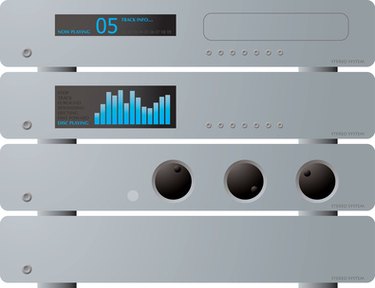
The preamplifier is an important part of your audio system because it helps process the sound as it travels from the source, such as a keyboard or guitar, to the power amplifier and speakers. The preamplifier improves sound quality by boosting the sound before it is sent through the power amplifier and removes some distortion that can be picked up when the signal moves through the stereo wires. Preamplifiers vary in price and can be simple boxes or complex equalizers. Connecting a pre-amp to a power amplifier can be done using XLR cables. If one of your devices doesn't support XLR, use RCA cables.
Step 1
Inspect your equipment and cables, and determine if everything is compatible. Read your equipment user manuals if you're unsure of compatibility. Most preamplifiers and power amplifiers are compatible with RCA and XLR cables. Set the power amplifier to the correct voltage for the power supply.
Video of the Day
Step 2
Connect the power cords for the power amplifier and the preamplifier in the designated plug-ins. These units usually use a grounded AC adapter to plug into power a power source. Use a three-pronged outlet to accommodate the ground prong.
Step 3
Plug one end of each connector cable into the output plugs on the back of the preamplifier. Outlets are marked with letters that correspond to plugs on the back of the power amp.
Step 4
Connect the other end of each cable to the corresponding input plug holes on the back of the power amplifier.
Step 5
Connect the source equipment to the preamplifier's input plug-ins, and connect the speakers to the power amplifier's output plug-ins.
Video of the Day